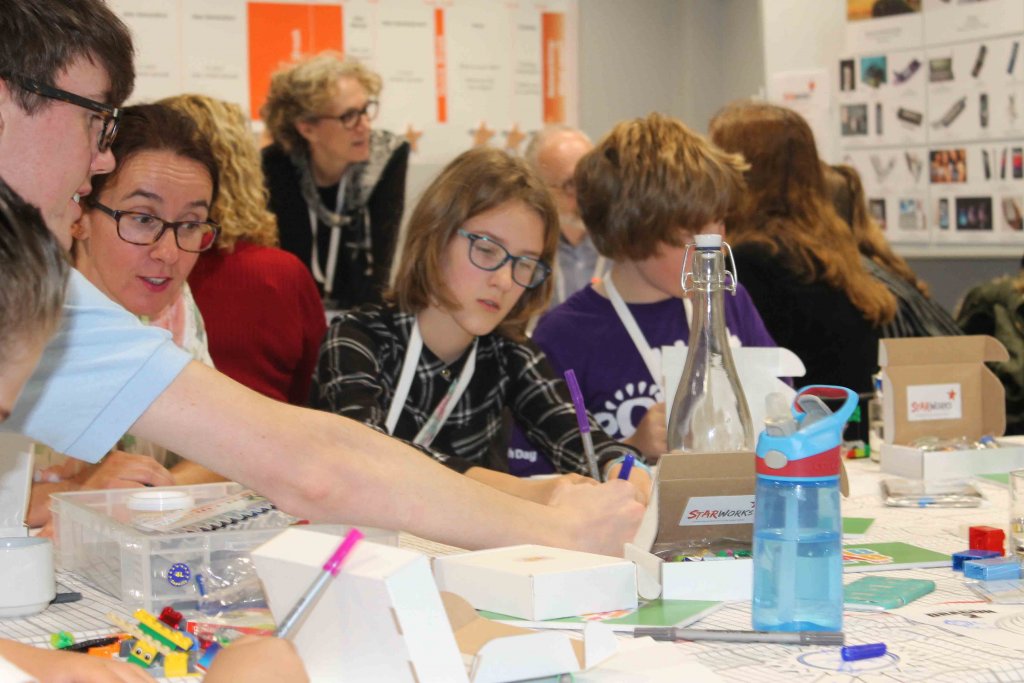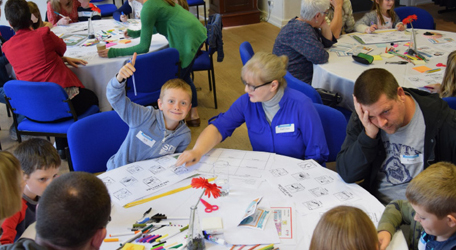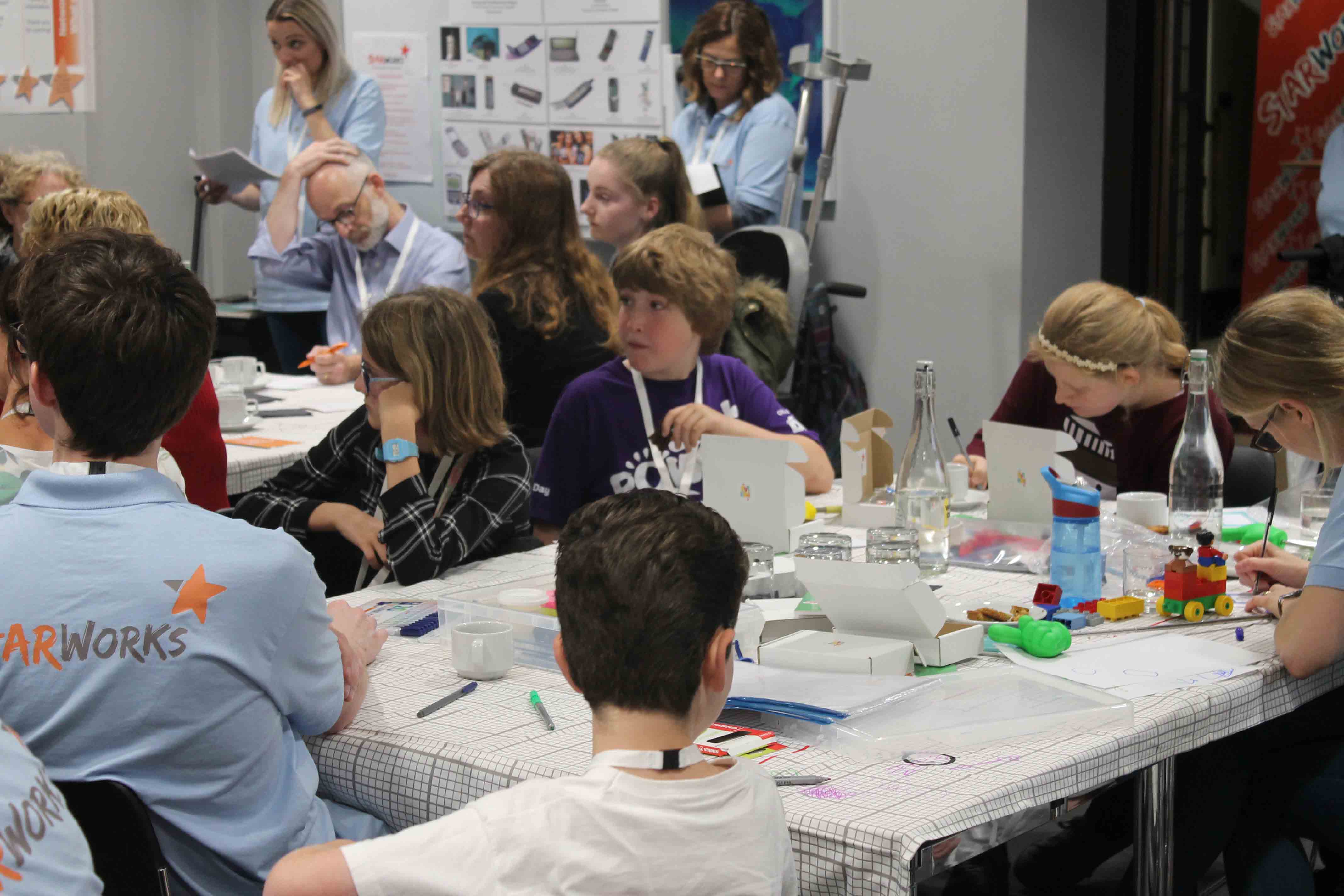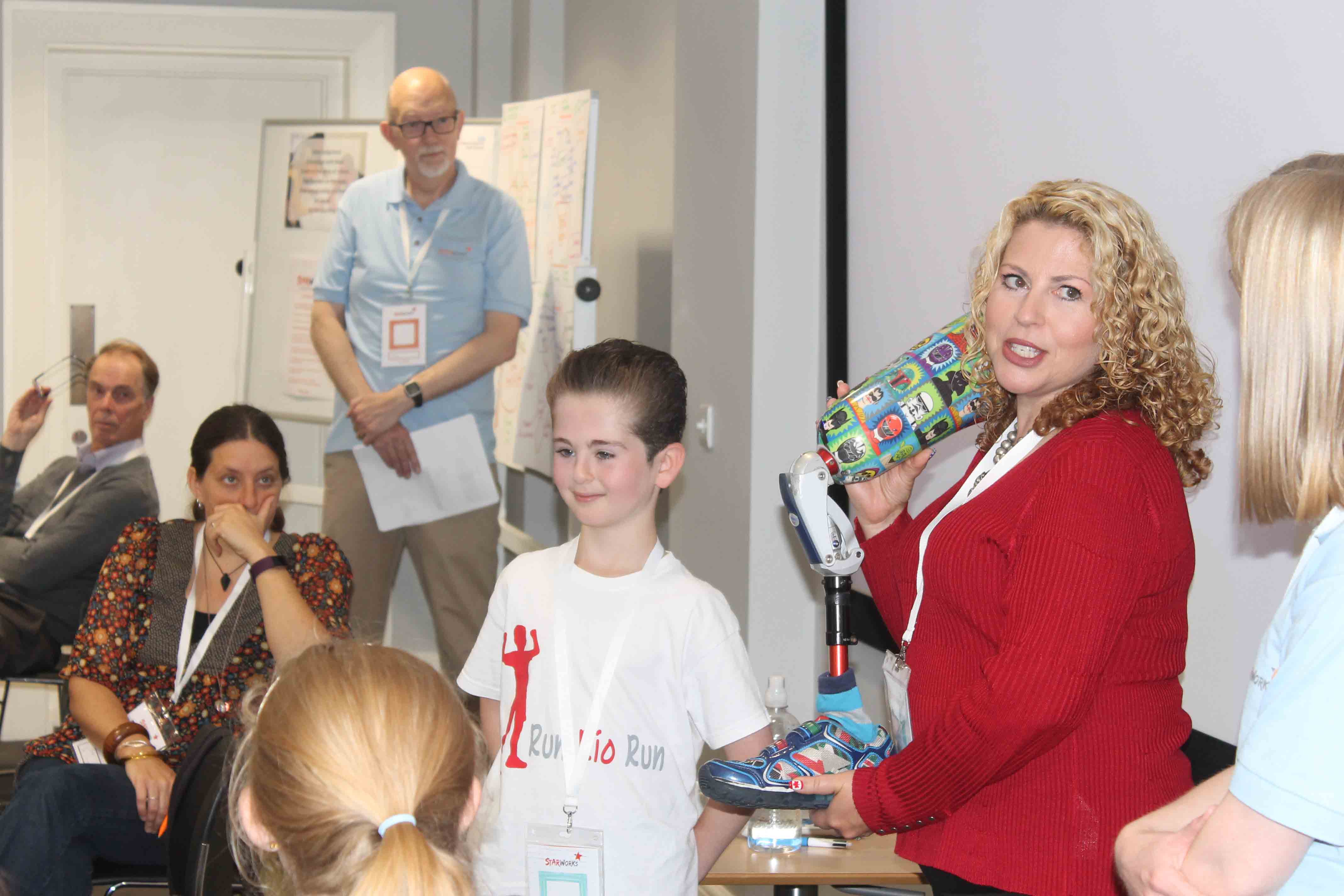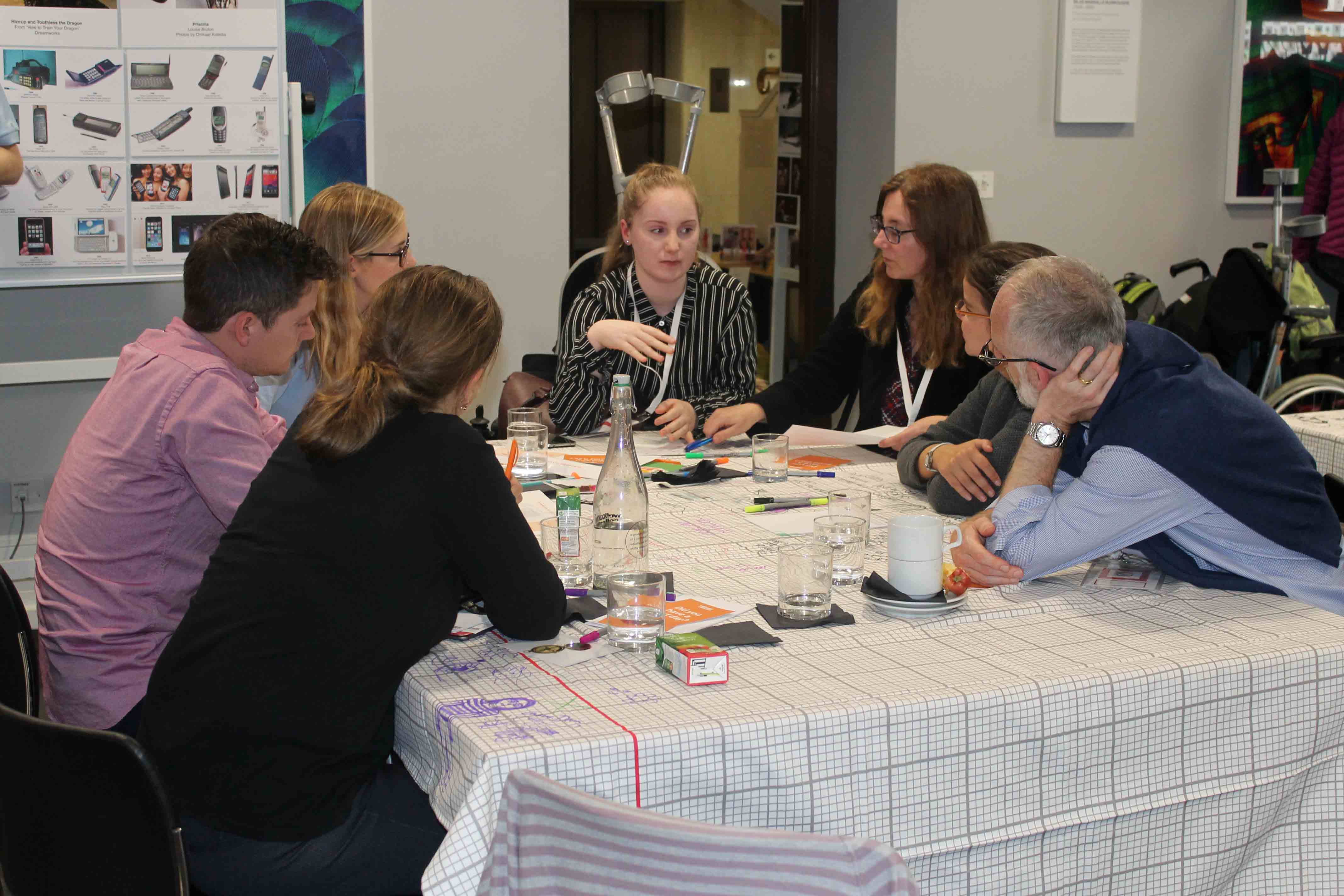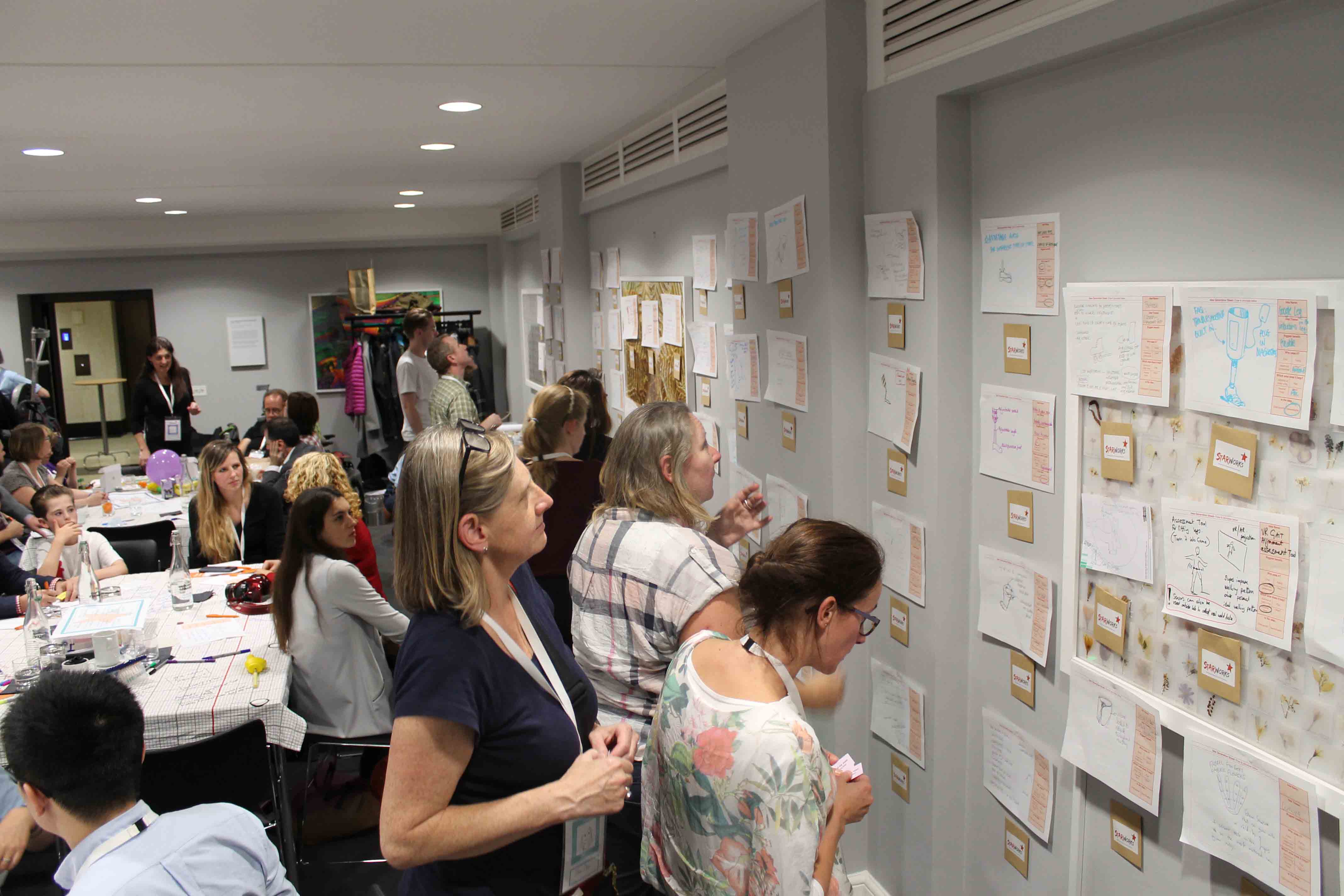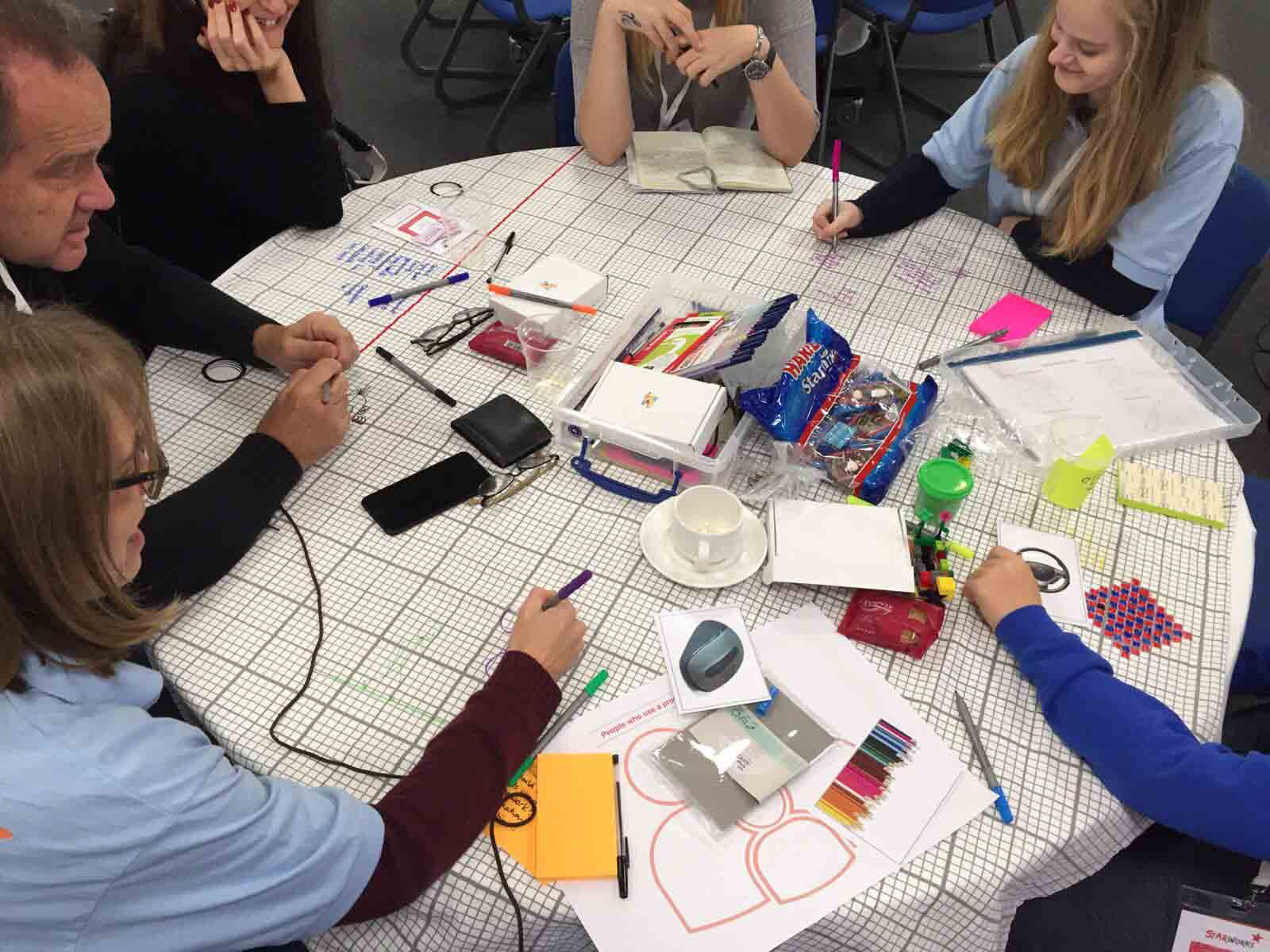The Starworks Network is a young people’s prosthetics research collaboration. It has taken a co-design approach to bringing children and families together with experts from healthcare, academia and industry, to creatively explore and address the unmet needs in this area.
Funded by The UK Department of Health / National Institute for Health Research (NIHR)
Project led by NIHR Devices for Dignity MedTech Co-operative, Sheffield Teaching Hospitals.
The Lab4Living team was led by Joe Langley and Gemma Wheeler.
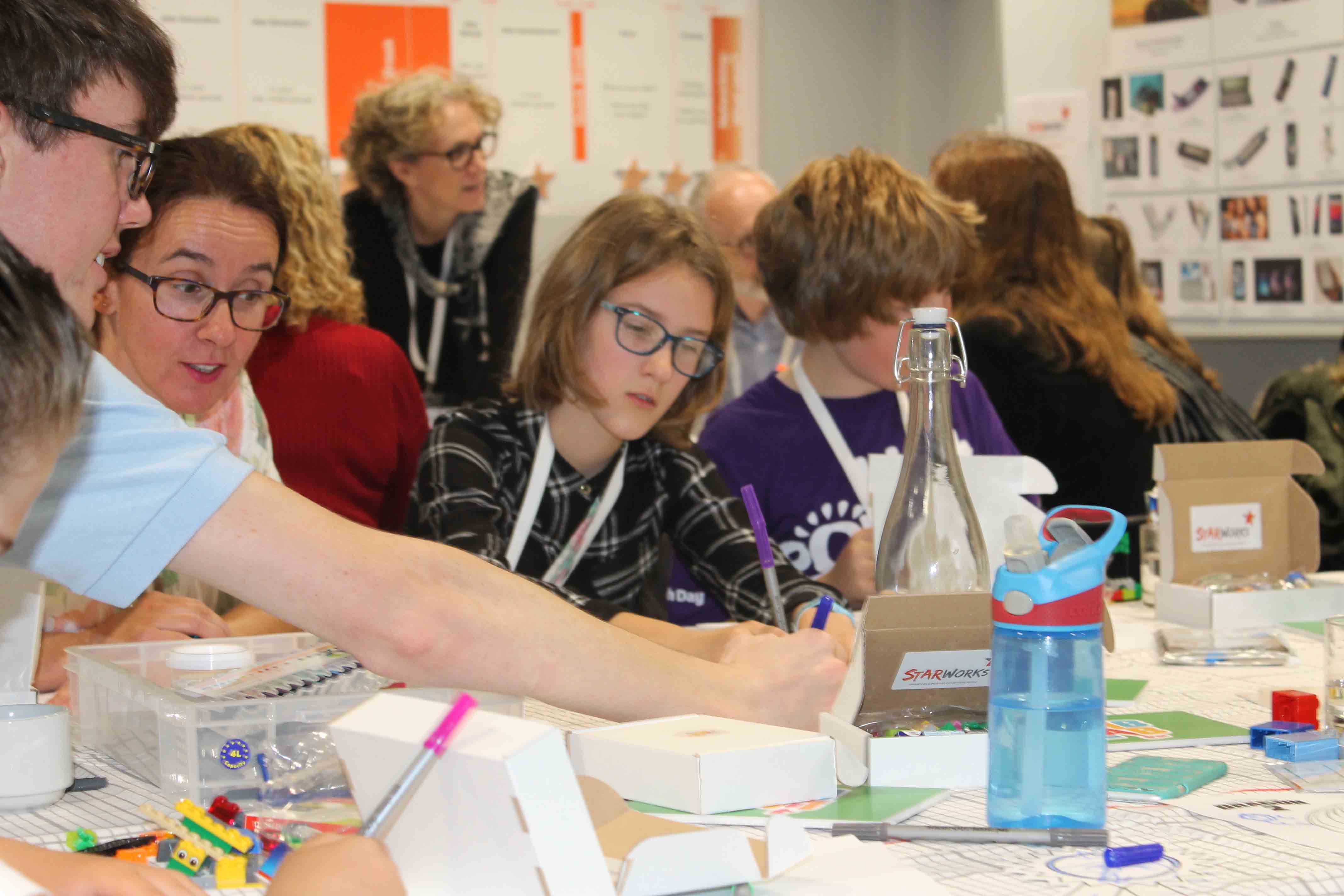
There are an estimated 2000 children in the UK living with a form of limb loss and many will use upper and/or lower limb prosthetics from an early age. However, product and service provision for these children is usually based on scaled-down versions of adult prosthetics, which often do not meet their unique functional, social and emotional needs.
In 2016, the Department of Health released £750,000 to build a network of clinicians, academics, industry experts, and crucially, children and families, to support research in this area. It aimed to ensure a balance between ‘clinical pull’ and ‘technical push’ in translating much-needed innovation in child prosthetics into everyday use.
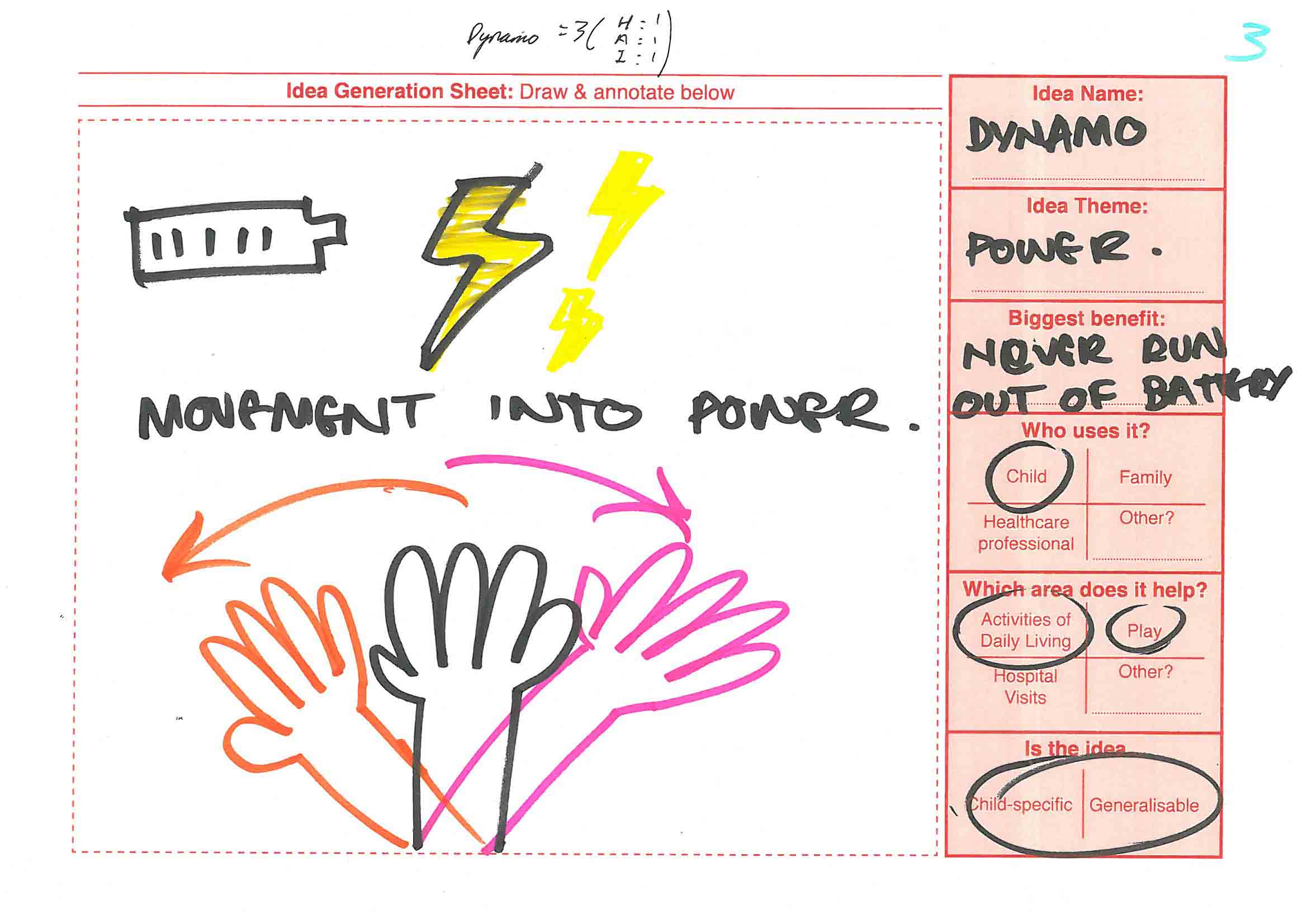
Our regular collaborators, Devices for Dignity (Sheffield Teaching Hospitals) invited Lab4Living to bring a co-design approach to the building and maintenance of this network. We have played a key role in the design, facilitation and reporting of each stage of the project, ensuring that children’s voices were central throughout.

“The Child Prosthetics Research Collaboration led to inventions and optimizations that reflected what children and families need. The experts and academics who develop prosthetics would probably never have heard from families and children how a poor-fitting or unattractive limb can limit a child at home, in the classroom and in the playground.”
(Gary Hickey, INVOLVE)
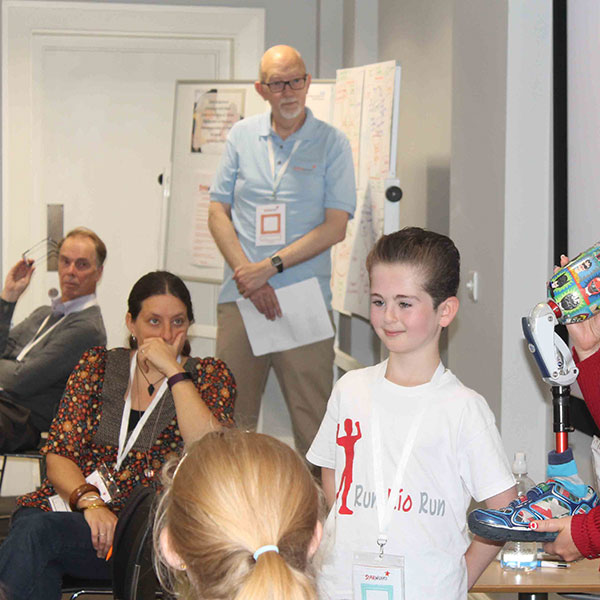
Needs assessment
We engaged children and families across the country through workshops, phone calls and postal activity packs tailored to a range of ages.
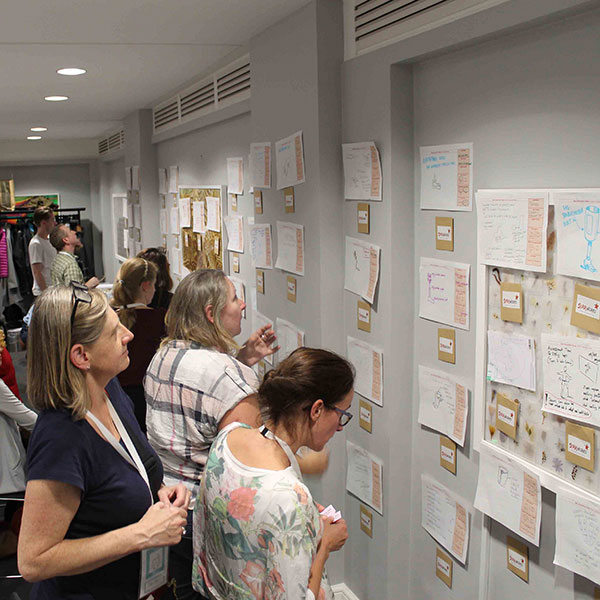
Sandpit events
A series of four one-day workshops in Salford, Bristol, London and Sheffield, brought the key stakeholders together to creatively and collaboratively explore key challenge areas emerging from the initial needs assessment. We designed a set of bespoke tools to support activities in problem definition, inspiration, ideation, prioritisation, development, pitching and network-building.

Proof of Concept projects
From this, The Starworks Network has funded 10 proof of concept projects looking to address issues of comfort, fit, customisation and training.
We have continued to provide design support to these projects and the Network as a whole, and are pleased to announce that it has been awarded follow-on funding from the NIHR to continue supporting research and innovation in this important area. Starworks 2 has begun and will further engage with all stakeholders to bring new innovations and technologies to children with limb difficulties.
“This, to my knowledge […] is the first of its type in scale and content and hopefully will produce some exciting, useful and relevant developments […] for our paediatric clients, who have sadly, by nature of their relatively small numbers and even smaller voices, been largely ignored by industry and the profession. Empowering the client group that you are trying to help and allowing them a voice in what is being developed for them is surely the best way forward.”
Rose Morris, Clinician, in ‘Attracting innovation in child prosthetics’, The Clinical Services Journal, February 2018, p56-58.
Devices for Dignity MedTech Co-Operative has announced the funding of 10 Proof of Concept projects, addressing a variety of needs for children using prosthetics.
Starworks has raised awareness of co-production methods through coverage in a Nature special issue on Co-production of research, published on 3rd October 2018 and in an upcoming guidance document by Involve (www.invo.org.uk).
A recent article in a clinical journal raises awareness and demonstrates recognition of the potential of the Starworks research collaboration. Raj Purewal, business development and partnerships director at NHS innovation specialist, Trustech, discusses how the project aims to increase progress in innovation in child prosthetics even further in an article for The Clinical Services Journal, February 2018, p56-58.
The Starworks project has supported the formation of collaborations between researchers across the country through Industry Forum events.
Outputs
WHEELER, Gemma, MILLS, Nathaniel and LANGLEY, Joe (2020). The Starworks Project: Annual Report to National Institute for Health Research 2017-2018. Project Report. Sheffield Hallam University. [Monograph] https://doi.org/10.7190/starworks-NIHR-1718
WHEELER, Gemma, MILLS, Nathaniel and LANGLEY, Joseph (2020). The Starworks Project: Annual Report to National Institute for Health Research 2018-2019. Project Report. Sheffield Hallam University. [Monograph] https://doi.org/10.7190/starworks-NIHR-1819
Mills N, Wheeler G, Langley J. “Case study 3: The National Institute for Health Research (NIHR) Child Prosthetics Research Project”, pages 27-37 in ‘INVOLVE (2019) Co-production in Action: Number Two’. Southampton, INVOLVE. Accessed 16-04-2020 online https://www.invo.org.uk/wp-content/uploads/2019/11/Co-production-in-action-No2.pdf
WHEELER, Gemma, MILLS, Nathaniel, LANGLEY, Joseph. ‘Co-production in Action, Part 2: The Starworks Project’, part of the Cochrane Learning Live webinar series hosted by Cochrane Training, Nov 2019 https://training.cochrane.org/resource/co-production-action
WHEELER, G, LANGLEY, Joe and MILLS, N (2019). Risk & reward: Exploring design’s role in measuring outcomes in health. Design Journal, 22 (sup1), 2231-2234. [Article]
LANGLEY, Joseph, WHEELER, Gemma, MILLS, Nathaniel and HERON, Nicola (2020). Starworks: Politics, Power and Expertise in co-producing a research, patient, practice and industry partnership for child prosthetics. In: CHRISTER, Kirsty, CRAIG, Claire and CHAMBERLAIN, Paul, (eds.) Design 4 Health 2020 Proceedings. Design 4 Health, Sheffield Hallam University, 314-322. [Book Section]
Further Information
Related research on Sheffield Hallam University’s Research Archive
 to top
to top

